How to Update a Traditional Exterior With Color
No matter where you live around the world, historic and traditional homes are often a big part of the architectural landscape. Some people love them; some prefer more contemporary architectural styles. Many traditional homes are often protected by historic preservation laws and guidelines, so if you own one, you might be stuck on how you can bring the space into modern times yet still keep it true to its original charm.
There's plenty you can do to the interiors and subsurface, like bring the foundations, electrical, plumbing and HVAC systems into the current century, for example. You can get rid of the old interior elements painted with toxic lead paint (or encapsulate them in new paint) and clear out any asbestos or other toxins. But when you're keeping the original facade of a historic home, what can you do to make it feel more fresh and contemporary on the outside?
Sometimes just a few gallons of paint can make all the difference.
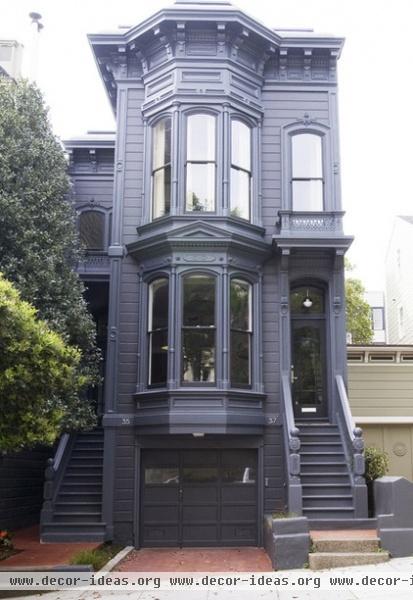
This hip update of a traditional Italianate Victorian in San Francisco's Mission district is a great example of taking a completely original facade (aside, perhaps from the garage, which was most likely added at a later date) and making it feel contemporary and stylish.
The historical detailing remains, but the contemporary house numbers subtly reinforce the modern design statement made by the choice of paints.
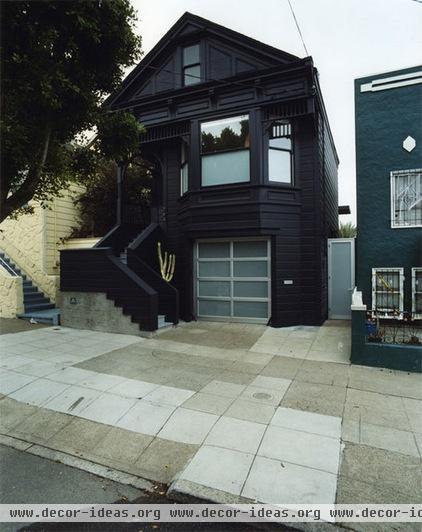
Going even further into the contemporary realm, this San Francisco Queen Anne cottage in the Noe Valley neighborhood received a modern do-over by Envelope A+D.
With the edgy black color scheme and new concrete base for the rebuilt stairs (with an embedded Space Invader, no less), nobody would mistake this home as being "original." While all of the Victorian detailing was retained, the black paint screams modern.
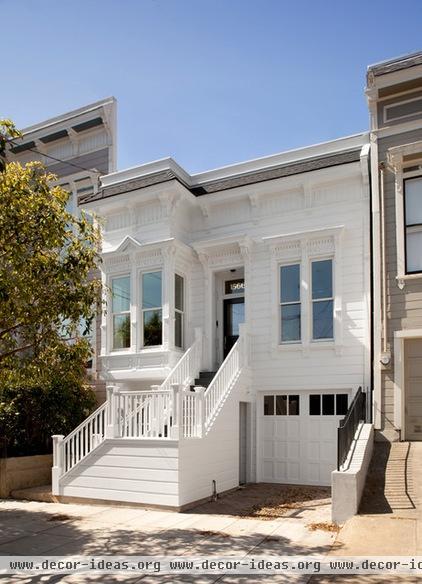
Opposite of dark is this Stick Victorian, a project I worked on personally — also in San Francisco. Providing a nice contrast with the neighbors and retaining all of the Victorian details, this color scheme makes the house pop and feel fresh and contemporary while still acknowledging and respecting the home's 19th-century provenance.
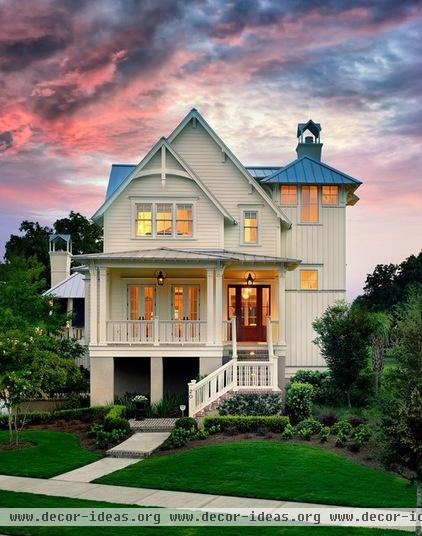
This new construction certainly pays homage to a different time in all of the traditional detailing of the siding, windows, eaves and railings. Yet the all-white motif and extensive use of French and ¾-sidelight doors on the main level are more modern touches that really add to the home's usability and its light and fresh feel.
The more contemporary tower on the right adds to and complements the home without altering the primary form of the home. With the two eaves on the left forming a mass of their own, the main structure of the home feels like it has the right traditional proportions yet enjoys the much-needed space inside from the tower and perpendicular mass in the rear.
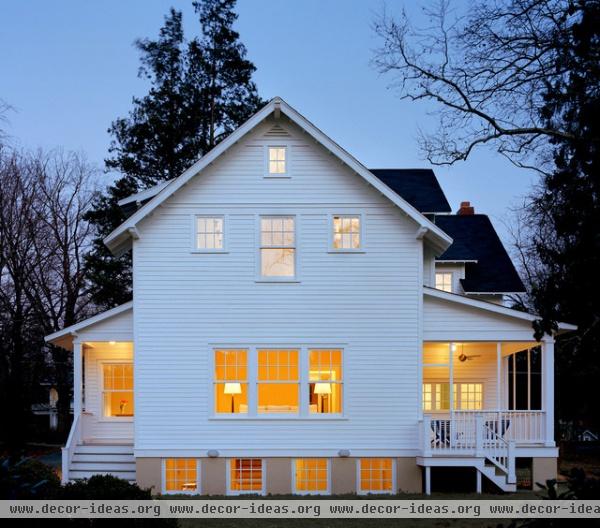
All white looks clean and fresh and isn't really what they did back in the day, so it feels bright and adds a hint of modernity to this very traditional colonial farmhouse.
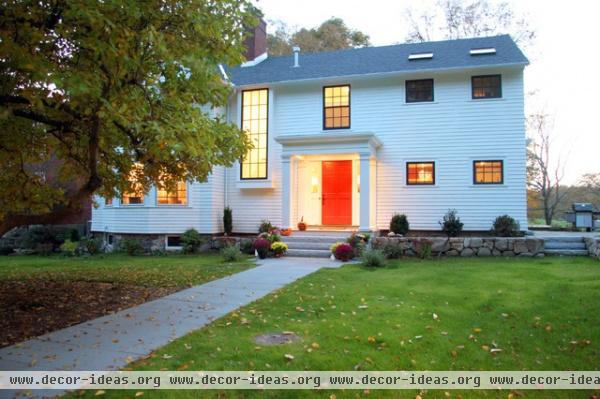
Fun door colors can also give a traditional exterior a bit of modern zing, for just the cost of a quart of paint.
Paint picks: 5 Bright Palettes for Front Doors
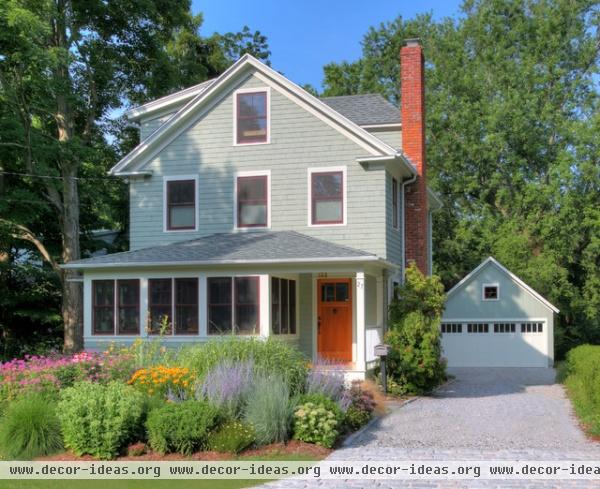
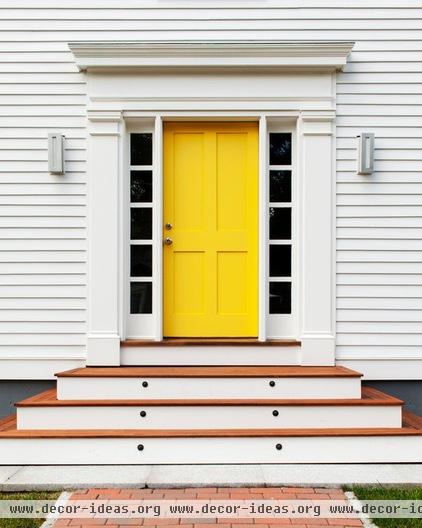
A bright entry door color can be a signal that a traditional home has a bit more personality than you might suspect from its simple form and body color. Try a bright orange or canary yellow.
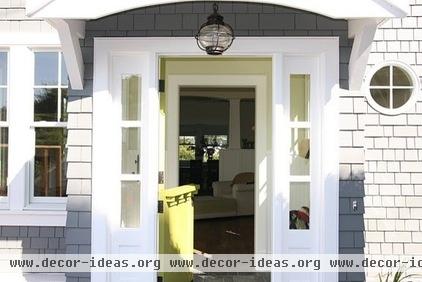
This door is a traditional color for French bistros, a subtle celadon, but not in the setting of a shingle-style home. This mixing and matching really works here and gives a pop of color to this warm gray home while being soft and inviting. The eclectic mix of colors feels modern even though none of the elements actually is.
Color guides: How to choose an exterior paint color












